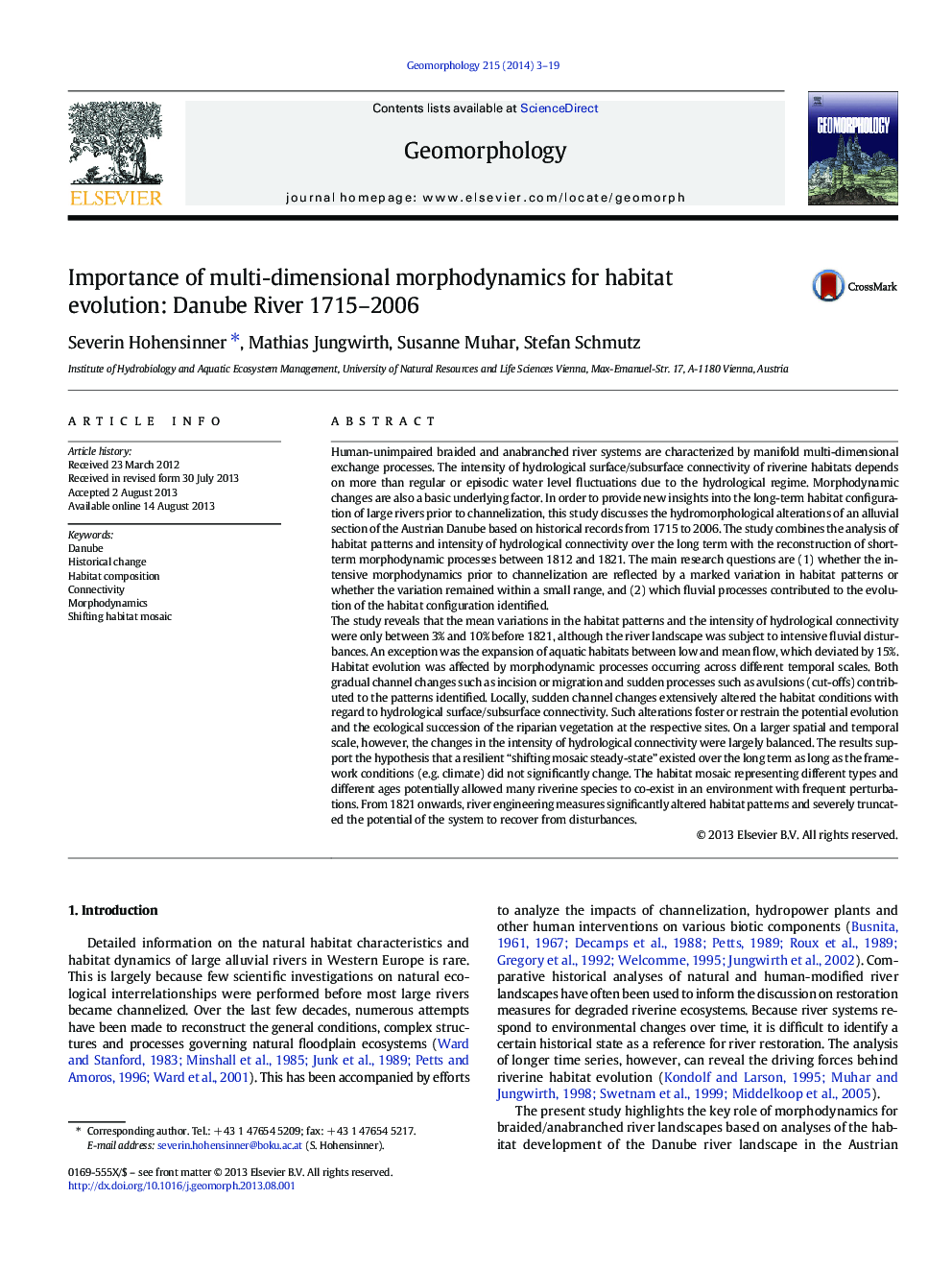| کد مقاله | کد نشریه | سال انتشار | مقاله انگلیسی | نسخه تمام متن |
|---|---|---|---|---|
| 4684501 | 1635434 | 2014 | 17 صفحه PDF | دانلود رایگان |

• 13 historical states of a Danube river landscape are reconstructed (partly 3D).
• The long-term variation of habitat characteristics is analyzed (1715–2006).
• Habitat patterns fluctuated only a little despite high flood activity before 1821.
• Short-term morphodynamics are discussed (1812–1821).
• A conceptual model for riverine habitat evolution is presented.
Human-unimpaired braided and anabranched river systems are characterized by manifold multi-dimensional exchange processes. The intensity of hydrological surface/subsurface connectivity of riverine habitats depends on more than regular or episodic water level fluctuations due to the hydrological regime. Morphodynamic changes are also a basic underlying factor. In order to provide new insights into the long-term habitat configuration of large rivers prior to channelization, this study discusses the hydromorphological alterations of an alluvial section of the Austrian Danube based on historical records from 1715 to 2006. The study combines the analysis of habitat patterns and intensity of hydrological connectivity over the long term with the reconstruction of short-term morphodynamic processes between 1812 and 1821. The main research questions are (1) whether the intensive morphodynamics prior to channelization are reflected by a marked variation in habitat patterns or whether the variation remained within a small range, and (2) which fluvial processes contributed to the evolution of the habitat configuration identified.The study reveals that the mean variations in the habitat patterns and the intensity of hydrological connectivity were only between 3% and 10% before 1821, although the river landscape was subject to intensive fluvial disturbances. An exception was the expansion of aquatic habitats between low and mean flow, which deviated by 15%. Habitat evolution was affected by morphodynamic processes occurring across different temporal scales. Both gradual channel changes such as incision or migration and sudden processes such as avulsions (cut-offs) contributed to the patterns identified. Locally, sudden channel changes extensively altered the habitat conditions with regard to hydrological surface/subsurface connectivity. Such alterations foster or restrain the potential evolution and the ecological succession of the riparian vegetation at the respective sites. On a larger spatial and temporal scale, however, the changes in the intensity of hydrological connectivity were largely balanced. The results support the hypothesis that a resilient “shifting mosaic steady-state” existed over the long term as long as the framework conditions (e.g. climate) did not significantly change. The habitat mosaic representing different types and different ages potentially allowed many riverine species to co-exist in an environment with frequent perturbations. From 1821 onwards, river engineering measures significantly altered habitat patterns and severely truncated the potential of the system to recover from disturbances.
Journal: Geomorphology - Volume 215, 15 June 2014, Pages 3–19